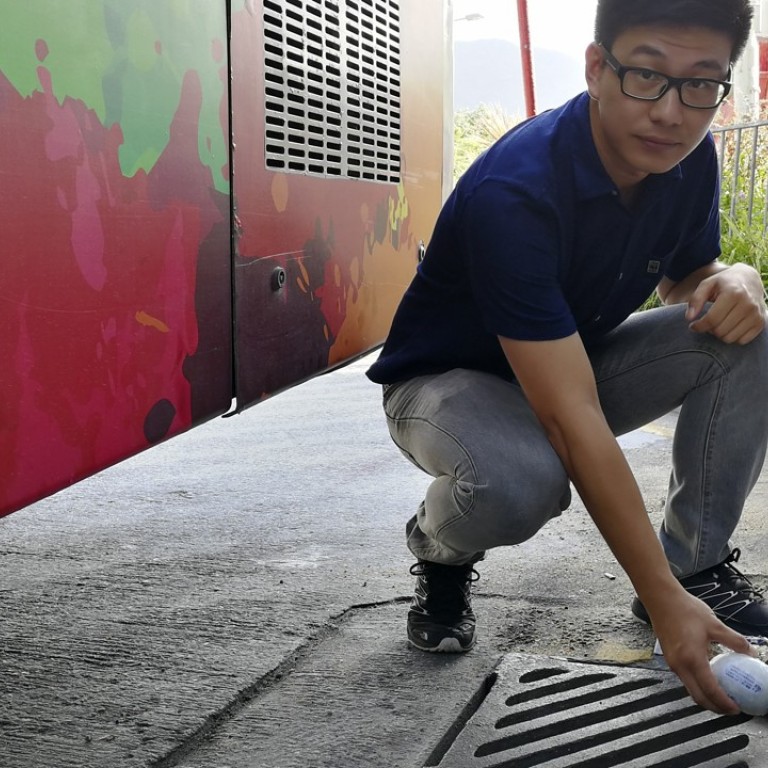
Tracking Hong Kong’s litter trail all the way to Taiwan
WWF deploys GPS signallers to find out where objects go after ending up in city drains, and calls for action on marine rubbish problem
Up to 40 per cent of litter dropped on Hong Kong’s streets may end up polluting the city’s waters or being washed ashore as far away as Taiwan, a study involving floating balls with GPS trackers dropped in drains has suggested.
Global conservation group WWF used 100 of the GPS devices to track the trash in the city’s storm drains and rivers. And its researchers called on the public and the government to curb street-level littering and manage drains better to cut it off at source.
The study, part of a project which got almost HK$1.5 million from the government’s Environmental and Conservation Fund, used floating balls similar in shape and size to goose eggs.
The waterproof, wax-coated drifters each carried a 3G mobile SIM card, and sent signals to pinpoint their location every seven minutes to an hour. Researchers have used those signals to track and map the balls’ voyages since dunking them into storm drains and rivers at 10 places around Hong Kong from June to late July this year.

After three weeks, about 20 per cent of the trash simulators from storm drains and 40 per cent from rivers were found to have ended up in open seas after zigzagging or swirling around the city.
And though most of the drifters remained in Hong Kong waters, some ventured overseas.
The longest voyage recorded was a 40-day odyssey from Yau Tong, East Kowloon, to Taipei, nearly 800km away.
Two other trackers checked in on July 26 from the seas south of Zhuhai and Macau after floating southwest from Kwai Chung and Tai O, where they had been released two weeks and seven days earlier respectively.
Last year, 16,485 tonnes of rubbish was collected from Hong Kong waters, the highest annual litter haul for a decade.
More than 70 per cent of that rubbish came from human activity on land, and most of that got into the sea via storm drains and waterfront activities within typhoon shelters, according to the Environmental Protection Department, though the exact amount coming from drains is hard to establish.
“Collecting waste in the drainage system might be the best way [to reduce marine rubbish] while so much effort has been put into cleaning the beaches,” Cesar Harada, who collaborated with an international team of scientists to invent the GPS-enabled drifters, said. He said another rationale behind the study was that “being able to trace the life of trash from the pocket or hand of a person will be the best way to raise awareness and to educate.”

And Patrick Yeung Chung-wing, marine project manager at WWF, urged the public to take responsibility in the battle against litter, and the government to boost attempts to get litter out of drains before it ends up in the sea, especially during the wet season from April to October.
“Storm drains are not garbage cans,” he said.
But there was some uncertainty over how big the problems in the city’s drains were.
The Drainage Services Department has over the past few years used floating booms at the outflows of several large drainage channels in the city, to collect the litter they emit and help quantify it. And officials recorded generally less than 1kg per month of rubbish being flushed out to sea since 2013, according to department figures. The department on average disposed of roughly 700 tonnes of waste cleared from drains to landfills every month.
Yeung acknowledged the department’s efforts, but said how much the floating booms collected would depend on various factors including their location and the flow rate.
Yeung said his group had observed an “increased amount of litter in the harbours after heavy rainstorms,” and called on the department to work with WWF.

